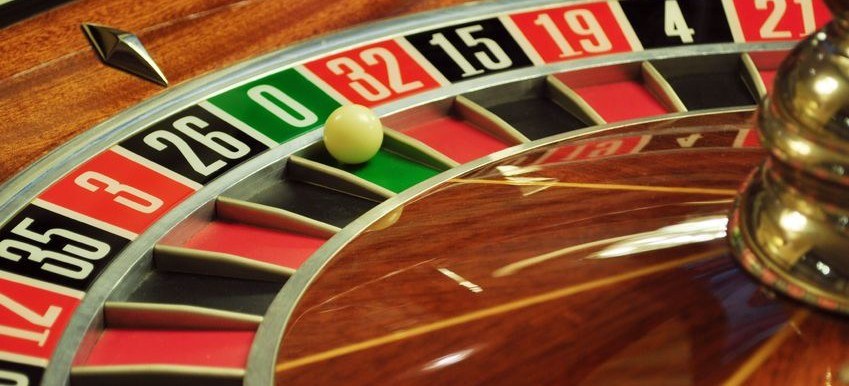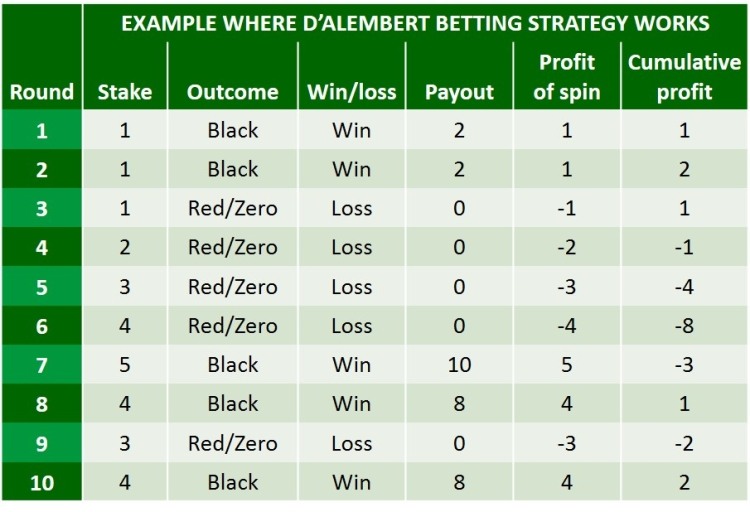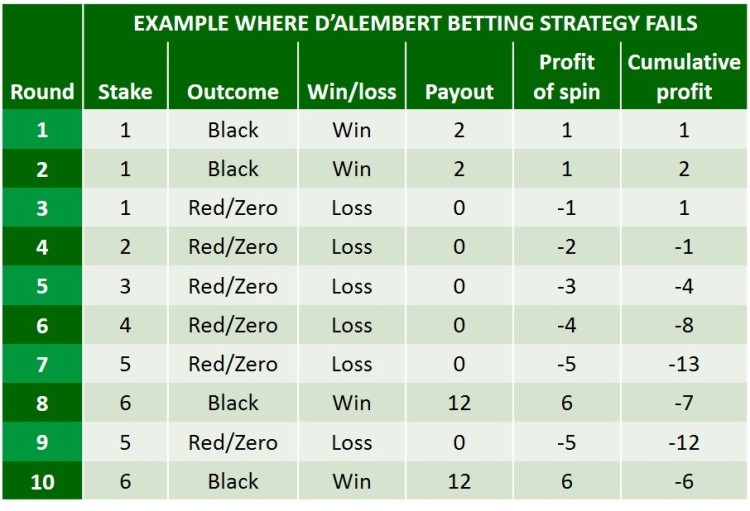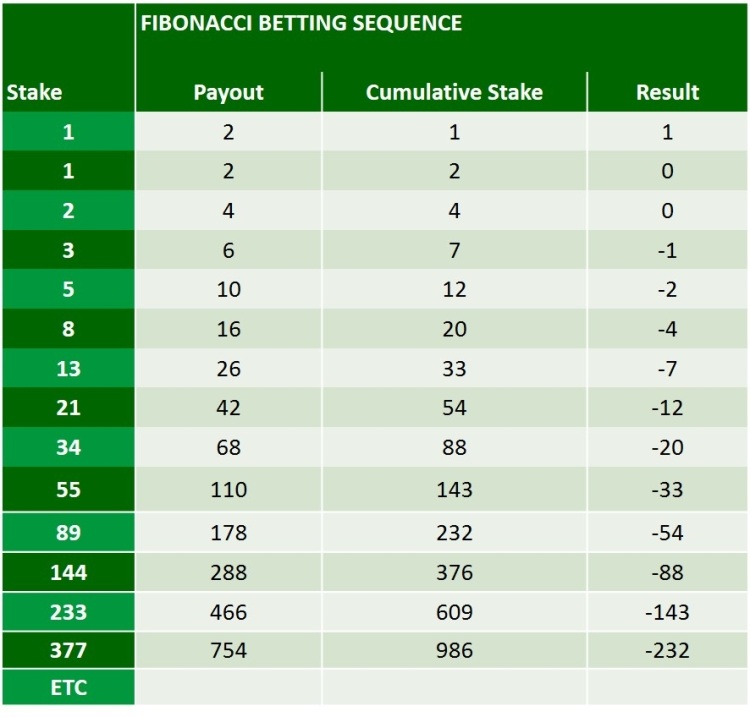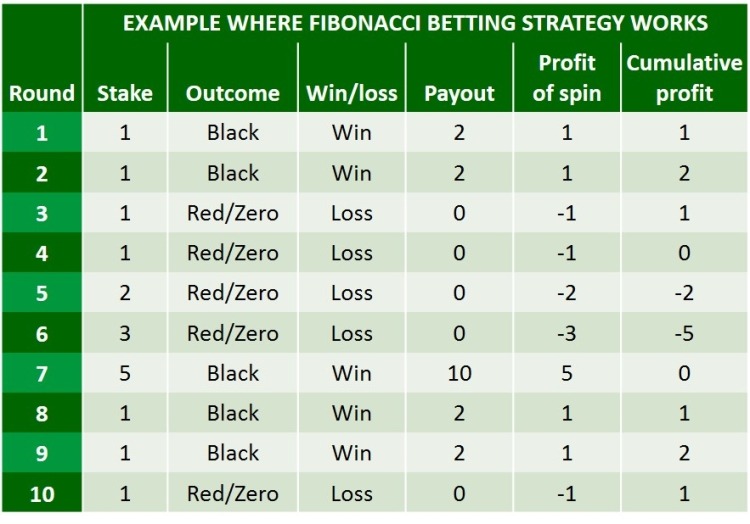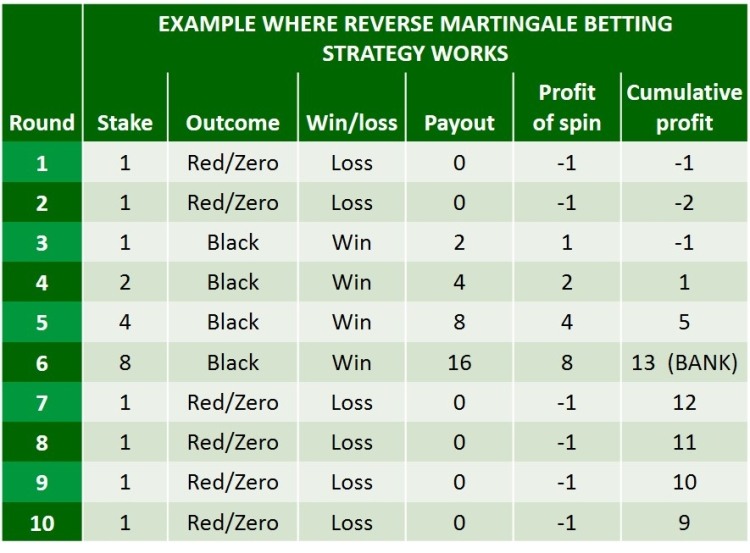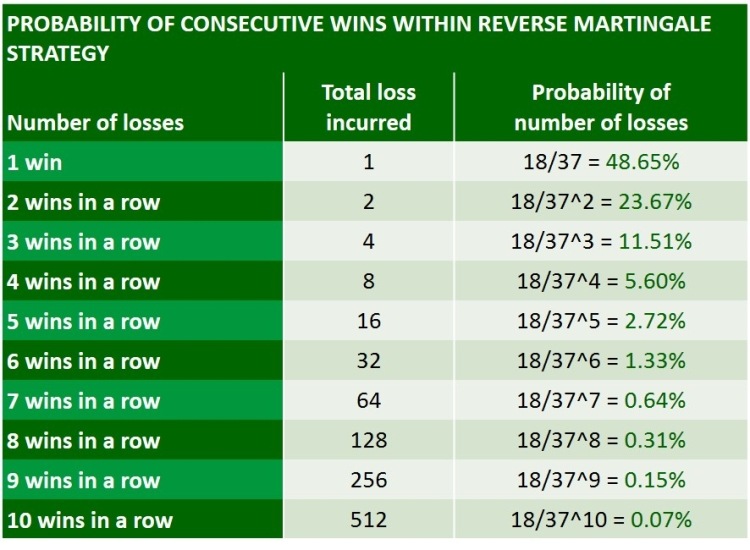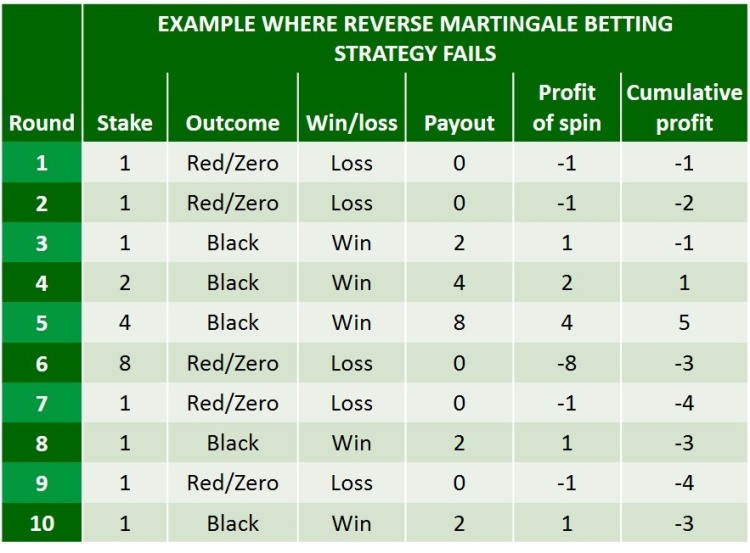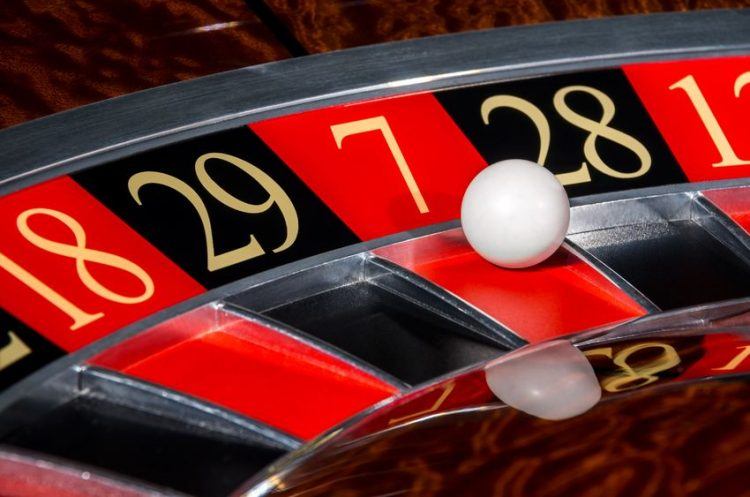
The Martingale strategy is the most famous betting strategy, by far.
It is a betting strategy that is applied to games that offer even money bets, such as roulette, blackjack and baccarat.
Several players regard the Martingale betting strategy as a strategy where you always win. Unfortunately, it is not that simple.
With the Martingale strategy, you start with a stake of one unit (for example $1) on, for example, Black.
- If you win, that is great. You have earned $1.
- If you lose, you double your stake to 2 units (say $2). If you win, you have staked in total $3 and have earned $4. Your result is a $1 profit.
- If you lose again, you double your stake again to 4 units. You stake $4 at once. If you win, you have staked in total $7 and have earned $8. Your result is a $1 profit.
- If you lose again, you double your stake again to 8 units. You stake $ 8 at once. If you win, you have staked in total $15 and have earned $16. Your result is a $1 profit.
- If you lose again, you double your stake once again to 32 units. You stake $16 at once. If you win, you have staked in total $31 and have earned $32. Your result is a $1 profit.
- You continue doubling your stake after each loss, till you have won.
After you have won the $1, you start the sequence again.
The table below summarises how the Martingale strategy works.
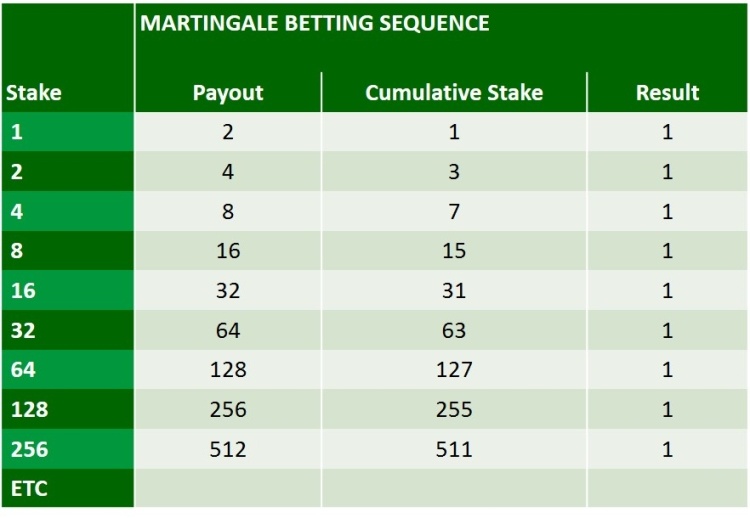
The advantage to the Martingale is that you always make a $1 profit after a win. Always!
The strategy falters when you lose 7 or 8 or even more times in a row. The amount you stake could be as high as $64, $128, $256 or even more.
Doubling your stake again, might not be possible. Either you do not have that a large amount of money available, or you are facing the maximum limits that casinos and online casinos may impose.
Moreover, there is a very reasonable chance that it happens.
If you choose to win more than $1, you need to play the Martingale sequence many times. The possibility of having a losing streak of 7, 8 or more times in a row, automatically increases.
An example of a winning Martingale strategy
Example 1: Here you see when the Martingale strategy works in your advantage.
You always bet on Black. You start with one unit (could be $1)
- You win the 1st and the 2nd
- The 3rd round, you lose. You double your stake on the 4th You lose again, and you double again in round 5. You win round 5.
- You start the sequence again with one unit. You win round 6.
- You start the sequence again with one unit. You lose round 7 and double your stake in round 8, which you win.
- You lose round 9. You double your stake in round 10 which you lose.
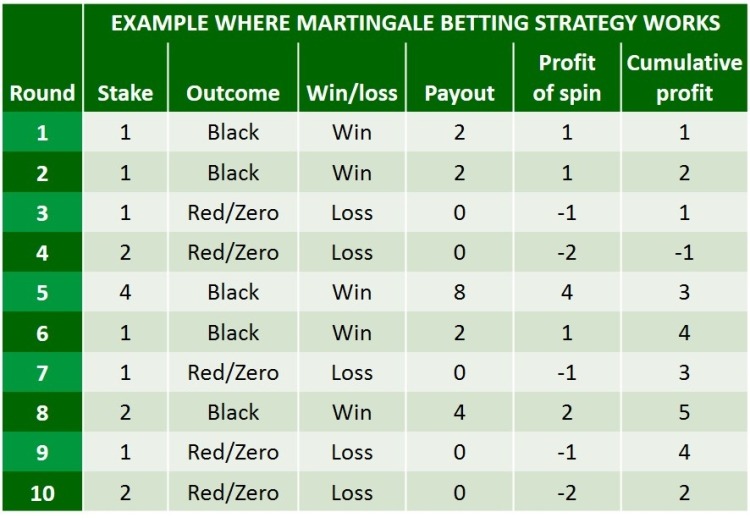
In this example of using the Martingale betting strategy, you end up with a profit of 2 units (a $2 profit) after 10 spins, even though the number of your wins (5 times) exactly match your number of losses (also 5 times).
An example where the Martingale strategy fails
Example 2: Here you see a scenario where the Martingale strategy fails.
You always bet on Black, and you start with one unit (could be $1),
- You win the 1st and the 2nd
- The 3rd round, you lose. You double your stake on the 4th You lose again, and you double again in round 5. Each time you double, and at the 10th round, you have lost 8 times in a row (the ball has landed in a Red pocket 8 consecutive times).
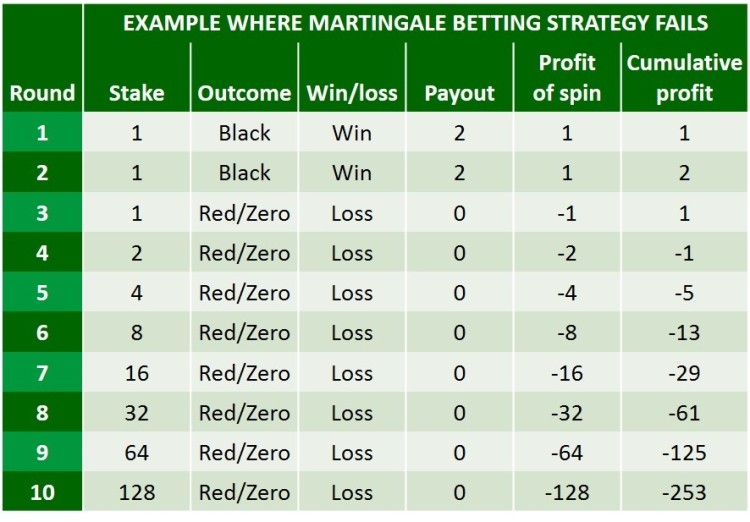
This example shows the downside risk of the Martingale strategy. You end up with a hefty loss of 253 units ($253).
The probability that the ball lands 8 consecutive times in the “wrong” colour (or in the zero) is 0,48%.
On average, it happens every 207 times, when you apply the Martingale strategy.
What is the probability of consecutive losses?
Even though you might think otherwise, those “impossible” series of outcomes are not all that rare.
You might dodge a bullet for a long time with the Martingale system, but it is a given statistical fact you will run into a rare series of losing outcomes.
Here is a table with the probability of consecutive losses, based on a roulette game with a single zero:
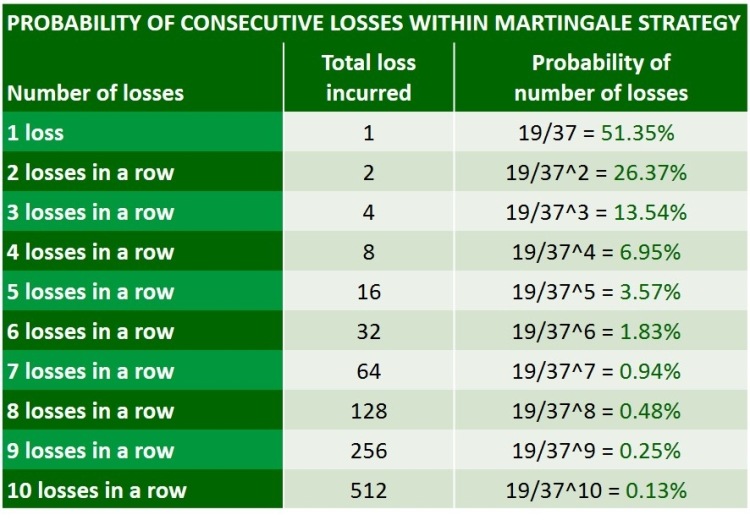
As you can see, it is not uncommon to lose 7 times in a row. In fact, in nearly 1% (0.94%, to be exact) of all sequences, you may lose 7 times in a row. Even 8 or 9 losses in a row are not uncommon.
The chance of hitting red after black has hit 8 times in a row does not increase, it is still 19/37.
Should these events occur, the Martingale system forces you to stake huge amounts of money to get a $1 dollar profit.
